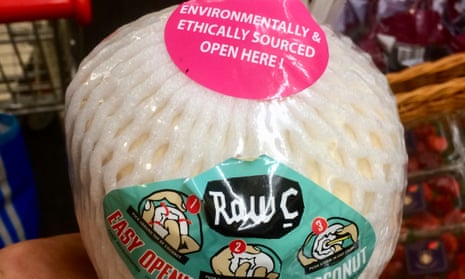Everybody is moved by the plastic pandemic, but whenever I bring up the possibility of using something else a chorus of manufacturers and retailers tells me I must not demonise this “miracle material”. After all, it has been included in heart valves, the cockpits of Second World War allied bomber aircraft, bulletproof vests and enabled space travel. It is heroic by implication.
To which I can only reply: “Yes, but what about the spork, a sort of spoon, fork and knife combo?”
As I watched said sporks roll off the extruding machines at a Northampton factory I was struck by the enthusiasm of the factory boss. He talked of the lightning speed of production (although did not mention the lightning speed of disposal) and cutting-edge R&D. It was as if we were about to witness the next generation of Apple watch rather than a disposable, cutlery hybrid that facilitates the “lunchables” market.
It’s pretty clear to everybody that plastic is a dumb material to pick for everyday use. First, it doesn’t go anywhere. Since plastic was commercialised and brought to market in the 50s, 8.3bn tonnes has been created. That’s the weight of one billion elephants. According to a groundbreaking study published last year, led by Prof Roland Geyer, just 9% has been recycled, 12% incinerated and 79% has accumulated in landfills or the wider environment.
So that’s the “worthy” argument, if you like. But perhaps we should concentrate more on our lack of technological ambition. Is plastic really the best we can do?
Once perhaps. In fact, the spork masks an epic story of discovery. The great-grandfathers of plastic – Alexander Parkes, John Wesley Wyatt and Leo Baekeland – undertook thousands of dangerous experiments with combustible ingredients in basements and lean-tos. This was breakthrough chemistry. They moved away from the confines of classic organic chemistry.
For the first time, limits weren’t set by using wood from trees or ore dug up from the ground where the behaviour, amount and structure of the material was already dictated. Instead, chemists were able to alter the molecular chain of plastics, giving the material different properties. It could bend, stretch or become translucent or incredibly durable. It put the chemists in control.
This must have really had the wow factor at the time, but now? Is this the extent of our vaulting ambition? Why aren’t we focused on the material that will define us, in a new, post-plastics era?
This complacency is matched by a curious tolerance for really terrible design. We all have multiple examples. My standout this year was a BA short-haul flight to Zurich (yes, I know, carbon emissions). The coffee was poured in a giant sippy cup, made from multiple different polymers and featuring a “patent-pending” mesh spout. It was so counterintuitive and so fraught with possibilities of causing injury that each passenger had to be given an induction in how to use it by the aircrew. We landed before mine was complete.
But my true nemesis is the shrink-wrapped coconut. Today, you’ll find a next-generation version in almost every supermarket in Britain. Not only are they shrink-wrapped, but they come on a special perch and fitted with a plastic ring pull. They are stamped “Genuine Coconut”. Why? This week, I am launching #FreeYourCoconuts, a viral campaign to shame British retailers into eliminating this ridiculous overpackaging once and for all.
There is plenty to get to grips with. In the UK, we’re world leaders in consumption of wet wipes (10.8bn of these plastic-based drain-perils are used every year) and plastic-stemmed cotton buds (13.2bn). This all adds up to a giant plastic footprint. By my reckoning, we each plough through 139kg-140kg of plastic a year, three times as much as in the 1980s. Much of it can be deemed unnecessary; some will end up in the marine environment (about 50 items a year). Just a tiny proportion will be recycled.
The injustice is not only to the planet. Ninety per cent of the cost of disposal of plastic is borne by consumers and just 10% by the manufacturers and retailers that impose it on us in the first place. And let’s face it, overengineered coffee cups and coconuts are not where human ingenuity should be utilised. We can do better.
We must do it quickly. Last week, I spoke to fellow activist Emily Penn. Leading a voyage with an all-female crew as part of eXXpedition, she was calling from the North Pacific gyre, one of the five gyres where ocean plastic congregates. She might have been on a crackly satellite phone, but the downcast tone of her voice was unmistakable. “In 10 years, I have never seen the plastic pollution this bad,” she told me.
We have to act now. “Plastic is a design failure,” says Cyrill Gutsch, founder of Parley for the Oceans, who created the Adidas ocean waste shoe. To get stuck with plastic for any longer will be a failure of imagination.
Lucy Siegle is the author of Turning the Tide on Plastic: How Humanity (And You) Can Make Our Globe Clean Again

